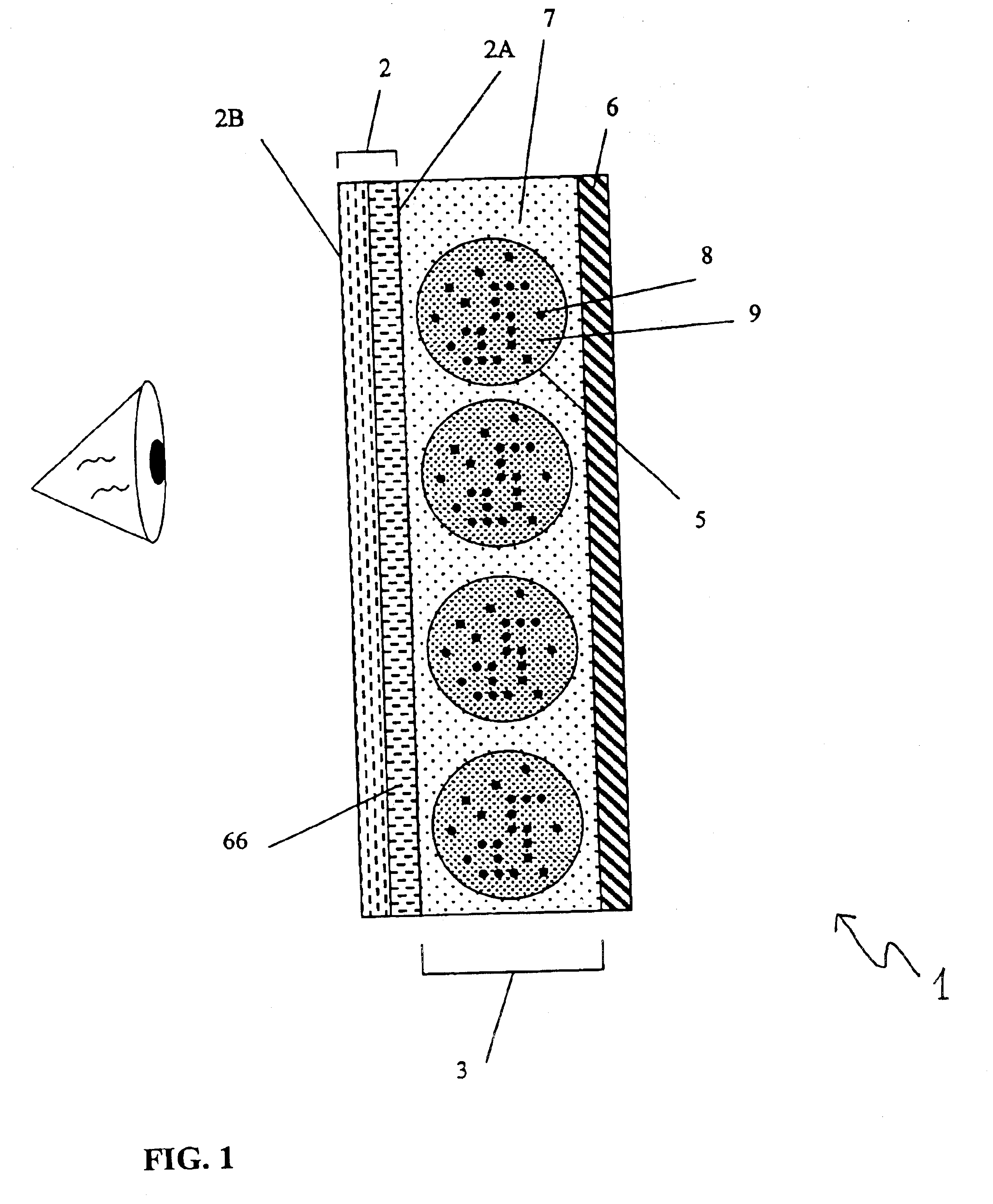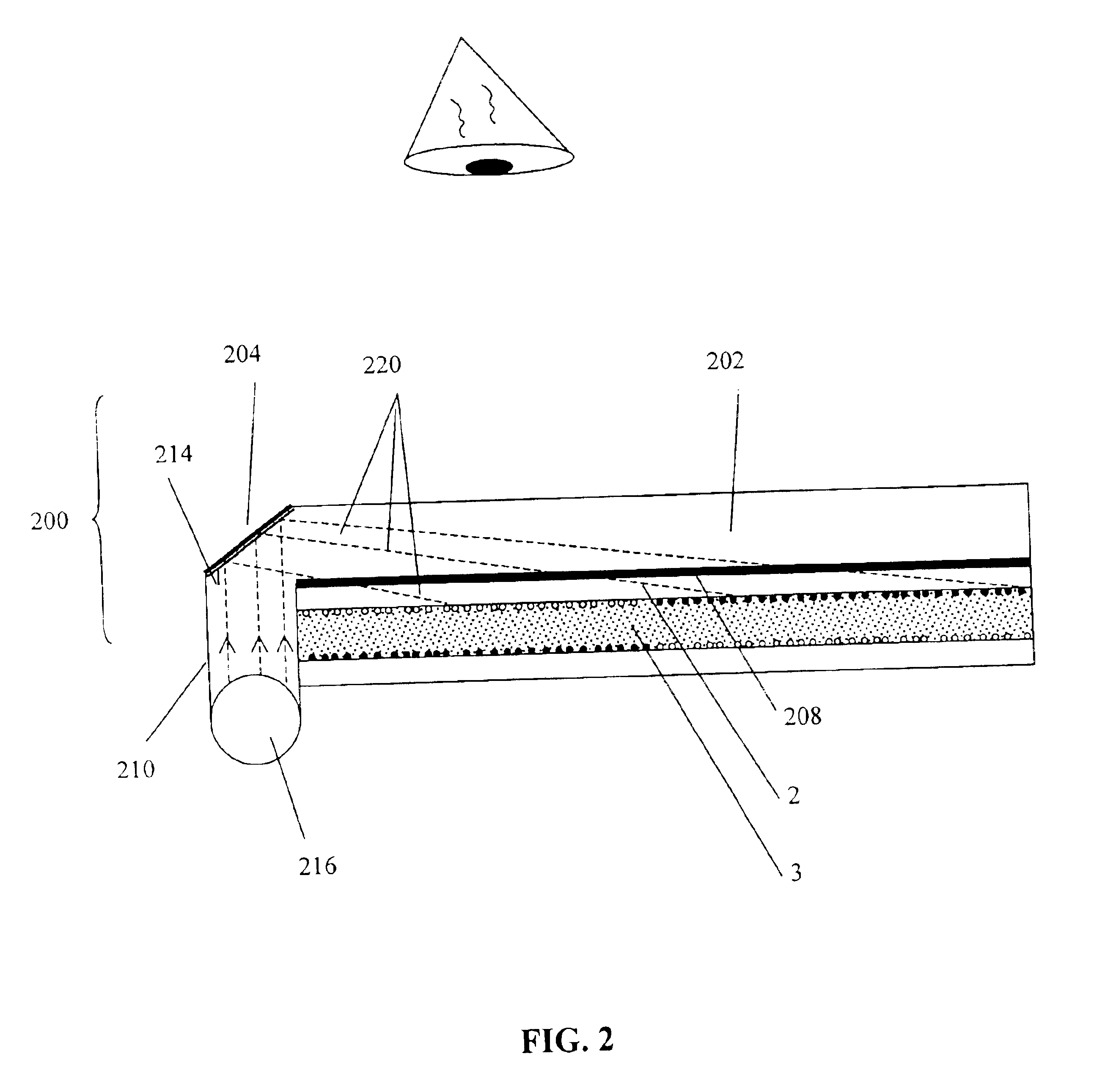Illumination system for nonemissive electronic displays
a technology of electronic display and illumination system, which is applied in the field of illumination system for nonemissive electronic display, can solve the problems of reducing the amount of light ultimately reaching the viewer, limited use of nonemissive display backlighting, and limited utility of using nonemissive display backlighting, so as to facilitate substantially uniform illumination of nonemissive electro-optic display medium and dissimilar indices of refraction
- Summary
- Abstract
- Description
- Claims
- Application Information
AI Technical Summary
Benefits of technology
Problems solved by technology
Method used
Image
Examples
Embodiment Construction
Referring now to FIG. 1, and in brief overview, an illuminated nonemissive electronic display 1 comprises a substrate 2 having a first surface 2a and a second surface 2b. A display medium 3 is disposed adjacent the first surface 2a and includes nonemissive display elements 5 having electrically-responsive optical properties, as discussed in more detail below. A front electrode 66 and a back electrode 6 bound the display medium 3. The back electrode 6 may be patterned electrode which selectively alters the optical properties of the display elements 5 in the display medium 3, generating displays of images and / or text, (moving or still) in response to voltages selectively applied to different areas of the display medium 3.
Throughout the specification, reference will be made to printing or printed. As used throughout the specification, printing is intended to include all forms of printing and coating, including: premetered coatings such as patch die coating, slot or extrusion coating, s...
PUM
 Login to View More
Login to View More Abstract
Description
Claims
Application Information
 Login to View More
Login to View More - R&D
- Intellectual Property
- Life Sciences
- Materials
- Tech Scout
- Unparalleled Data Quality
- Higher Quality Content
- 60% Fewer Hallucinations
Browse by: Latest US Patents, China's latest patents, Technical Efficacy Thesaurus, Application Domain, Technology Topic, Popular Technical Reports.
© 2025 PatSnap. All rights reserved.Legal|Privacy policy|Modern Slavery Act Transparency Statement|Sitemap|About US| Contact US: help@patsnap.com



